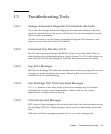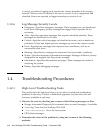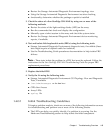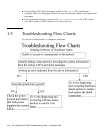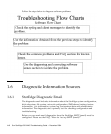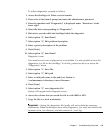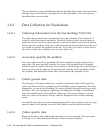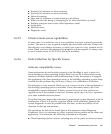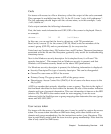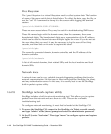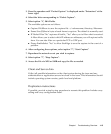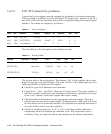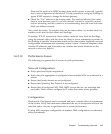
Chapter 1 Troubleshooting Overview 1-11
■ Version(s) of software on client system(s)
■ Version(s) of software on server system(s)
■ Network topology
■ Steps and/or sequence of events leading to the failure
■ What was the user doing or attempting to do when the failure occurred?
■ Problem symptom (error codes, failed operation, crash)
■ Syslog data
■ Network traces
■ Diagnostic email
1.6.2.5 Check remote access capabilities
In some cases, it is useful for one of your escalation resources to directly access the
system. This can be a way to greatly simplify advanced data collection. Please note
that this step is not always necessary or useful, but it can be a very valuable tool at
times. When you know that advanced investigation will be required, it’s always wise
to ask if remote access via TCP/IP or dial-up is available.
1.6.2.6 Data Collection for Specific Issues
Software compatibility issues
Some applications do not function properly when StorEdge is used in place of a
server running a native operating system. Most, but not all, of these issues can be
resolved with data collection and troubleshooting. It may be necessary to upgrade
the application, the client operating system, or the StorEdge operating system. Keep
in mind that the problem may lie in any of these, or a combination of all three.
The first step is to do research. Check to see if a newer version of the application or
the StorEdge operating system is available. Check the release notes to see if the
compatibility issue is addressed. If either version is far out of date, perform an
upgrade to see if the problem is resolved. Another useful step is to try to operation
on a other available network clients.
To escalate the issue, begin data collection by generating a system diagnostic with all
attachments. If there is a specific symptom which can be identified, generate the
system diagnostic as close as possible after this time, so that any effects can be
observed in the logs and statistics.
The procedure for this can be found later in this document under Diagnostic
Procedures. Next, it is necessary to collect as much data as possible on the client and
application. At a minimum, the following information is required:
■ Client Operating System version, including any service packs or minor revisions



